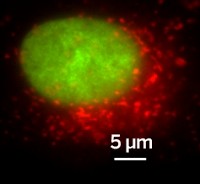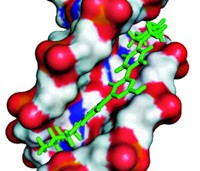Advertisement
Grab your lab coat. Let's get started
Welcome!
Welcome!
Create an account below to get 6 C&EN articles per month, receive newsletters and more - all free.
It seems this is your first time logging in online. Please enter the following information to continue.
As an ACS member you automatically get access to this site. All we need is few more details to create your reading experience.
Not you? Sign in with a different account.
Not you? Sign in with a different account.
ERROR 1
ERROR 1
ERROR 2
ERROR 2
ERROR 2
ERROR 2
ERROR 2
Password and Confirm password must match.
If you have an ACS member number, please enter it here so we can link this account to your membership. (optional)
ERROR 2
ACS values your privacy. By submitting your information, you are gaining access to C&EN and subscribing to our weekly newsletter. We use the information you provide to make your reading experience better, and we will never sell your data to third party members.
Analytical Chemistry
Red Radiance
Researchers develop the brightest far-red fluorescent protein to date
by Sarah Everts
September 3, 2007
| A version of this story appeared in
Volume 85, Issue 36

PEERING DEEP into live animals may now be easier, thanks to a red sea anemone and some clever protein engineering. Russian researchers are reporting a new red fluorescent protein that is more than significantly brighter than any existing contender (Nat. Methods, DOI: 10.1038/nmeth1083).
Dmitriy M. Chudakov, Andrey G. Zaraisky, Sergey Lukyanov, and their colleagues at the Institute of Bioorganic Chemistry, in Moscow, have engineered what they hope will be "the protein of choice for whole-body imaging techniques," Chudakov says. It's a protein called Katushka.
Those who develop fluorescent tools to visualize living tissues battle several molecular adversaries. Hemoglobin and melanin proteins absorb enlightening photons having wavelengths below 650 nm, while water soaks up light beyond 1,100 nm. In between these two wavelengths is the sweet spot in the far-red spectrum for tissue visualization. But existing far-red fluorescent proteins are dimmer than desired.
Katushka "establishes the current state of the art in a rapidly moving field," comments Roger Y. Tsien, a biochemist at the University of California, San Diego, who engineers fluorescent proteins. While he's impressed with the deep penetration of the red fluorescence in frog tissues shown in the paper, Tsien would like to see how the protein fares in mammalian tissues, which contain more obfuscating hemoglobin absorbance.
To engineer Katushka, the researchers first isolated a red fluorescent protein from a sea anemone that Lukyanov bought from a Moscow pet shop. After looking at an X-ray crystal structure of a related protein, the researchers made strategic substitutions to three amino acids near the fluorescing chromophore. The team then gave fate a chance by introducing random amino acid mutations to the library of strategic mutations.
In total, more than 100,000 proteins were screened for fluorescent ability. The pay dirt was Katushka, which is a dimer protein. Although dimer proteins are useful for whole-animal imaging, they are too bulky for labeling single proteins in cells. So the team used a similar strategy to engineer a monomer version of Katushka called mKate.
"We have a winner here as a potential FRET [fluorescence resonance energy transfer] acceptor for live-cell imaging," comments Taekjip Ha, a physicist at the University of Illinois, Urbana-Champaign.





Join the conversation
Contact the reporter
Submit a Letter to the Editor for publication
Engage with us on Twitter